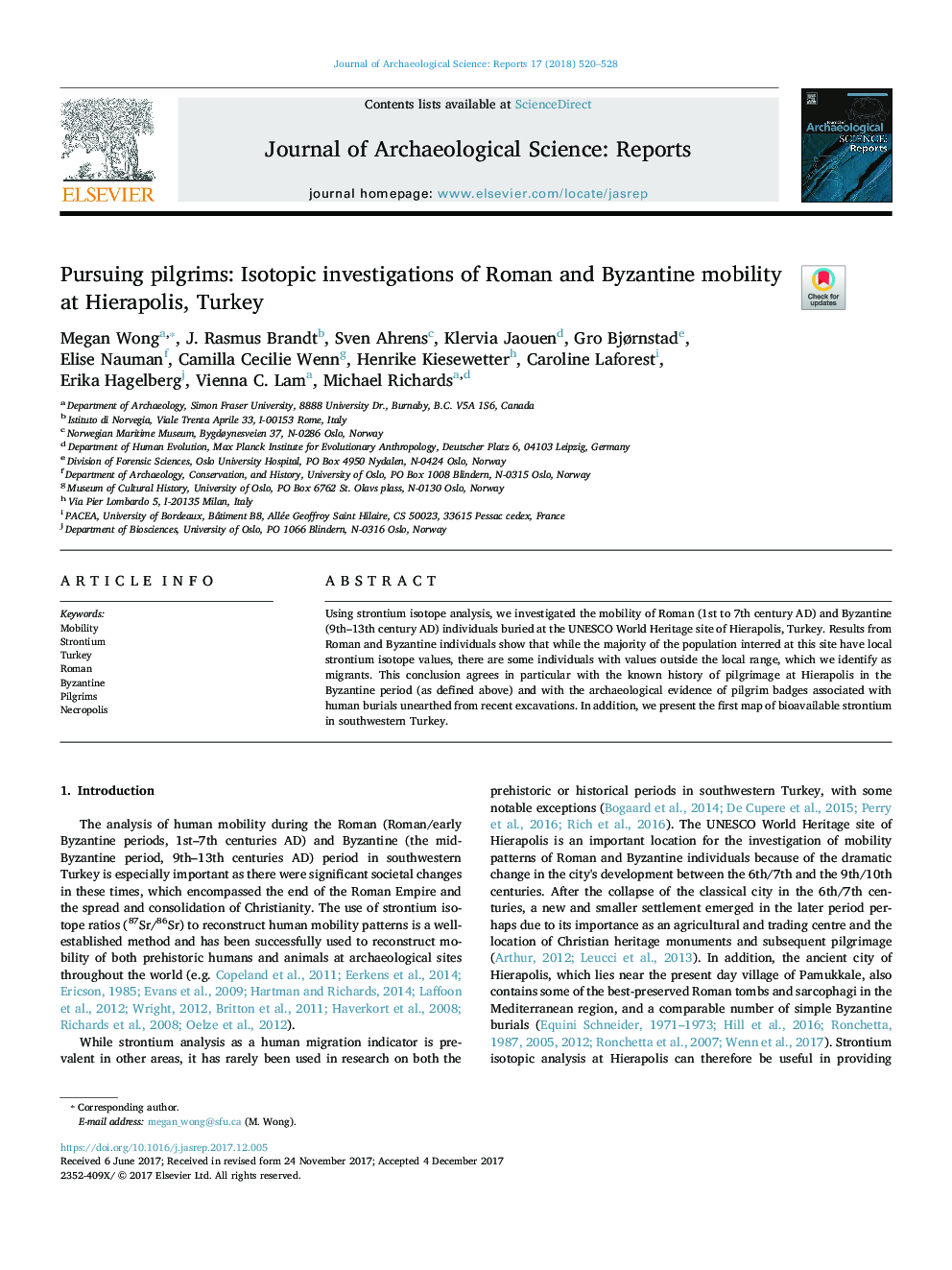| Article ID | Journal | Published Year | Pages | File Type |
|---|---|---|---|---|
| 7445218 | Journal of Archaeological Science: Reports | 2018 | 9 Pages |
Abstract
Using strontium isotope analysis, we investigated the mobility of Roman (1st to 7th century AD) and Byzantine (9th-13th century AD) individuals buried at the UNESCO World Heritage site of Hierapolis, Turkey. Results from Roman and Byzantine individuals show that while the majority of the population interred at this site have local strontium isotope values, there are some individuals with values outside the local range, which we identify as migrants. This conclusion agrees in particular with the known history of pilgrimage at Hierapolis in the Byzantine period (as defined above) and with the archaeological evidence of pilgrim badges associated with human burials unearthed from recent excavations. In addition, we present the first map of bioavailable strontium in southwestern Turkey.
Related Topics
Social Sciences and Humanities
Arts and Humanities
History
Authors
Megan Wong, J. Rasmus Brandt, Sven Ahrens, Klervia Jaouen, Gro Bjørnstad, Elise Naumann, Camilla Cecilie Wenn, Henrike Kiesewetter, Caroline Laforest, Erika Hagelberg, Vienna C. Lam, Michael Richards,
